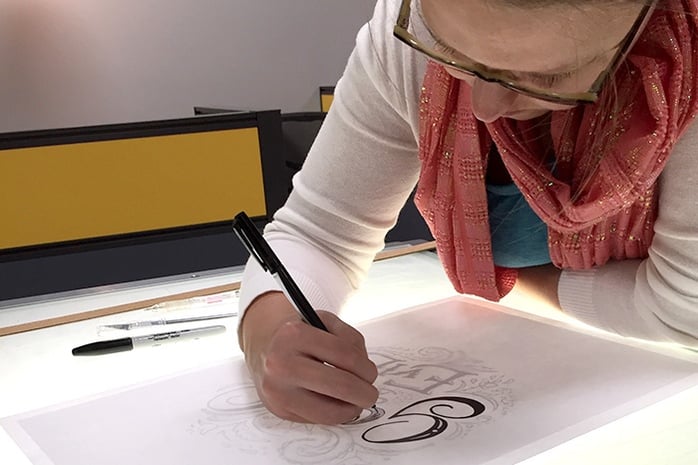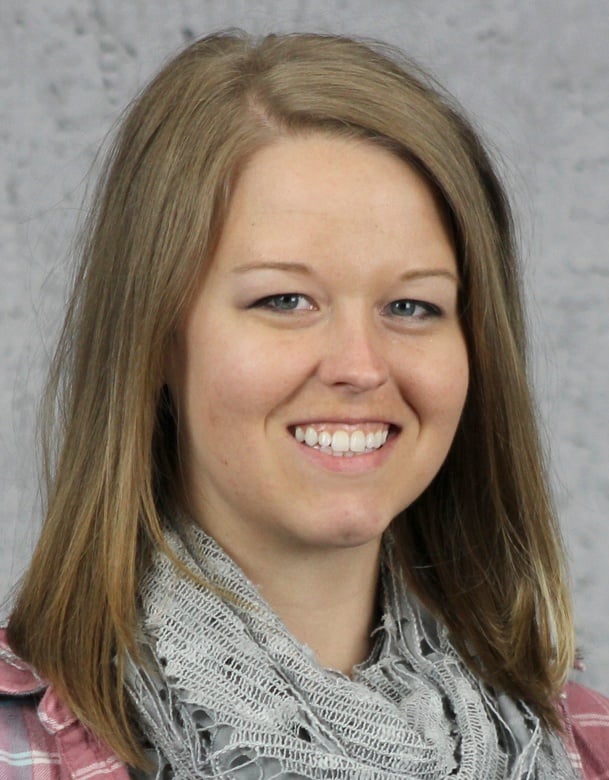
As a graphic designer who previously worked at an agency that dealt mostly with digital and inbound marketing, I had mixed feelings about accepting a job at Suttle-Straus. The company seemed like a great fit, but I had only toured a printer once and I found it overwhelming. However, that was part of the appeal. Turns out, there’s a lot I can learn by getting out of my comfort zone.
In a facility this big, it’s impossible to know it all. However, working as a designer in a print shop, I have picked up a few things in the last year. Here are some of the highlights:
Print Coatings
Previously, I had only thought about coatings as a full flood (usually an aqueous glossy coating) or in a spot coating scenario, using them to draw attention to specific areas of a design. I didn’t realize the subtle differences between the different types of coatings, and I definitely didn’t understand the best uses for each of them.
Aqueous coating can be used to create a high-gloss or a matte surface. I was under the assumption high-gloss was my only option. Aqueous is a great way to protect a piece that is handled a lot. And, because it is water-based it’s more environmentally friendly than other coatings.
UV coatings need ultraviolet light to dry and are convenient due to their quick dry time. They provide the highest gloss, but may crack when folded due to the hardness and thickness.
Soft touch coating gives paper a velvety texture. I always thought that the feel came from the paper itself – that it was somehow created differently. It never occurred to me that this effect came from a coating.
Uncoated vs Matte
I personally prefer print pieces that have an uncoated or matte finish. I appreciate the professional feel that they provide while allowing the texture of the paper to come through. However, I didn’t have experience choosing between uncoated or matte. Uncoated paper has no extra coating or paper finish, has no glare and is ideal for projects that will be written on. It is also very porous and will absorb more ink. Matte coating is a light coating that provides a smoother presentation, with a softer appearance and very little glare. The light coating is ideal for reproducing sharp and complex images because the coating restricts the amount of ink that is absorbed, reducing dot gain.
Die Lines and Scores
I previously had little to no experience with die lines, so the whole process was a learning experience. I always knew how to set up a file that included a die – the die lines need to be on a separate layer and labeled appropriately – but I didn’t know that scores/folds were treated the same way.
Seeing an actual die was confusing at first. It was hard to tell what the final piece would look like based on the cut and scoring marks, but once I realized how the process works it became clear. It is also possible that a piece might not need a die, since the cutter operator can create straight cuts and scores manually.
I also thought that you might be able to manipulate a die to retro fit a new design but after exploring that path a few times, I’ve realized that it is usually more affordable and more efficient to simply purchase a new die.
Folding
A fold is pretty straightforward. However, knowing whether or not a fold can be done by machine is not so simple. Different folding machines allow for different fold abilities. Our machines have a wide range of capabilities, but there are still some limitations. Some piece are too elaborate to be machine folded and need to be folded by hand.
The different folding types are buckle-plate folding, knife folding, and plow folding.
Buckle-plate folding is the most common process and is great for high-speed folding. The process uses 3 rollers and a buckle plate to create the fold. Most machines have the ability to have multiple buckle plates, allowing for a large number of fold variations.
As the name implies, knife folding uses a knife to create the fold. It is less common, but a popular choice for folding large sheets of paper. Unlike buckle-plate folding, there is only one knife and one fold at each station.
Plow folding is common for heavyweight stocks, inline print finishing and long runs. The fold is created as the sheet travels over a metal plow, forcing a parallel fold. Plow folding has an elaborate setup so it is typically reserved for large print quantities.
Registration Marks
I had always heard the term and briefly remember discussing them in college, but I didn’t know the purpose of registration marks. Registration marks are important for precision and placement. They print outside the trim area and are used to accurately align plates for multiple color print jobs. In our Wide Format department we have another type of registration mark, it is used to align an artwork file with a cut file.
Overall, the main thing I have learned from working at Suttle-Straus this last year is that there is a lot of value in having experts from different departments at my disposal. Collaborating with people who know print inside and out has allowed me to come up with ideas than I never thought possible because I wasn’t exposed to all the capabilities that print has to offer. Papers, inks, coatings, cuts and folds are just a few of the things I can add to my designer’s toolbox now.
Ready to collaborate on your next design project?



